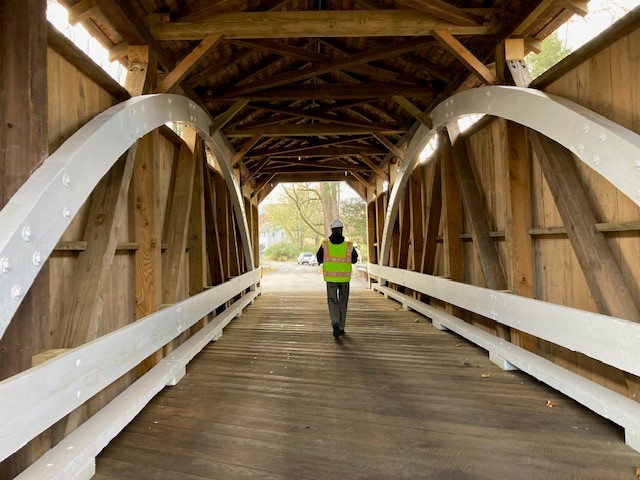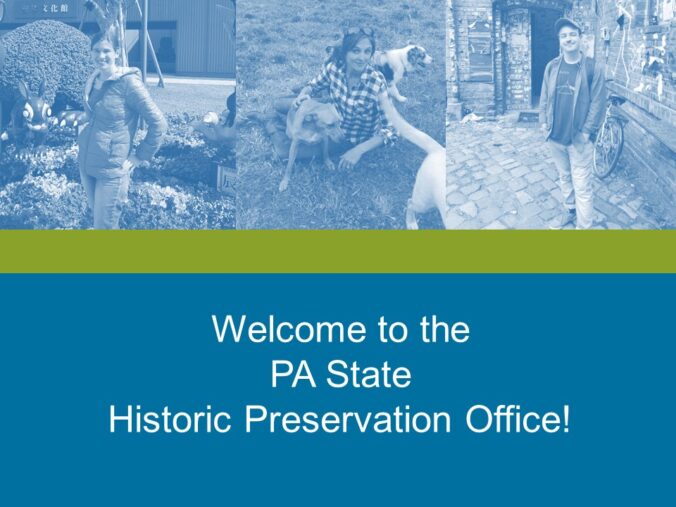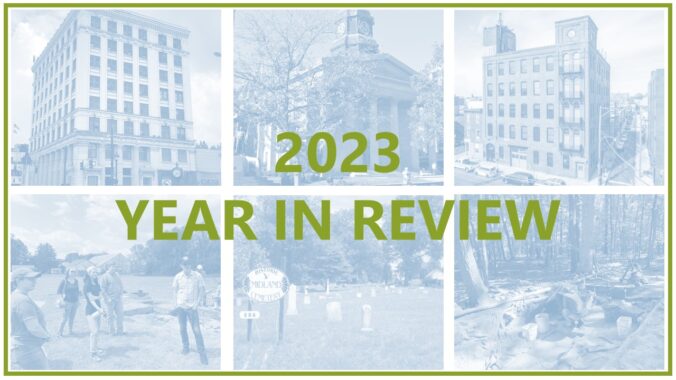“Coming together is a beginning. Keeping together is progress. Working together is success.” — Henry Ford
Category: Environmental Review (Page 2 of 13)
“This bridge will triumphantly typify the trail-blazing strategy…” so said Pennsylvania Governor John S. Fine in 1954 about the soon to be constructed Hawk Falls Bridge, finishing with “that took the Pennsylvania Turnpike System across streams of great width and turbulence…and through the rocky cores of mighty mountains.”
I’m happy to introduce you to our newest PA SHPO staffers! We are very excited to have Jennifer Thornton join us as our National Register Coordinator, Ashley Respet as part of the above ground Environmental Review team, and Alex O’Gorman as the Historic Property Inspection Program Coordinator.
I asked each of them to answer a few questions to help us get to know them.
This is part of a biannual blog series highlighting the agreement documents executed by PA SHPO in accordance with Section 106 of the National Historic Preservation Act and its implementing regulations.
Between July 1 and December 31 of 2023, PA SHPO has been a signatory to approximately eleven (11) Section 106 agreement documents with five different federal agencies as part of consultation for the resolution of adverse effects to historic properties.

Apply Now! PA SHPO’s Summer 2023 Internships
Are you exploring the field of historic preservation and looking for some real-world experience? The Pennsylvania Historical and Museum Commission’s Keystone Internship Program provides opportunities to pursue your professional growth and contribute to sharing Pennsylvania’s rich heritage with the public.
We’d like to invite college and graduate school students interested in historic preservation, archaeology, community planning, cultural resources, architectural history, public history, and other related fields to apply for their summer 2024 interning experience.
While I am still enjoying the holiday high (and feeling blissfully stuffed), I am also looking forward to the many initiatives the PA SHPO has in the works for 2024.
It’s been a minute since I did a “year in review” post for the blog, so I thought I’d treat our readers to PA SHPO’s version of the ubiquitous end-of-year list.
In the spirit ICYMI, here is a list of the best posts from 2023 that you want to be sure to read. If I had to sum up the blog’s year in one phrase, I think it’s “a year of education, entertainment, and everything in between.”

From Fifty-One to Two: Rehabilitation of One of Schuylkill County’s Last Two Remaining Covered Bridges
The Rock Covered Bridge and Zimmerman Covered Bridge National Register nominations note that Schuylkill County once had fifty-one covered bridges. By the time the nominations were written in 1977, the total count was down to two.
We had some fun recently during a site visit to identify the presence of a historic agricultural district for a solar project…
*Cue Sir David Attenborough’s voice*
Here we are searching for the elusive historic agricultural district. Often impossible to find, we are hoping to get a glimpse of it today, as whispers of its appearance have been heard. What vast expanses of agricultural land use and lack of modern residential development, perhaps we will get a sighting after all. But what is this that appears on the horizon? Large modern grain bins indicative of monocropping, followed by farmsteads lacking historic barns? Ah well, it would appear the earlier rumors of a visit from that elusive beast, the historic agricultural district, have been unfounded. Perhaps when we return to the hunt tomorrow, we may catch a glimpse.
Are you interested in joining a proactive and dedicated team of historic preservationists, historians, archaeologists, and planners? The Pennsylvania State Historic Preservation Office (PA SHPO) is seeking a Historic Preservation Specialist with a discipline in architectural history or history within the Environmental Review Division.








Recent Comments